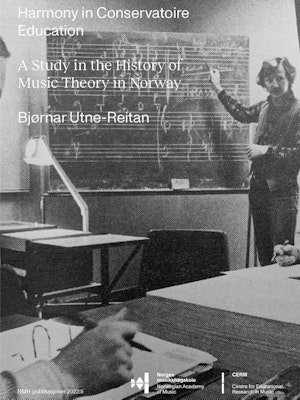Bjørnar Utne-Reitan’s dissertation aims to develop a wide-ranging historical understanding of how music-theoretical disciplines such as harmony and counterpoint have been constructed and justified as part of higher music education. It does this through a study of the situation in Norway in general, and Oslo in particular, from the late 19th century to the early 21st century.
The dissertation is the first extensive study in the history of music theory in Norway. The source material comprises music theory books, formal curricula from the Oslo Conservatoire and Norwegian Academy of Music and music theory debates in periodicals. Through Foucault-inspired discourse-oriented analyses of these historical documents, Utne-Reitan explores complex developments in the music theory discourse in Norway.
